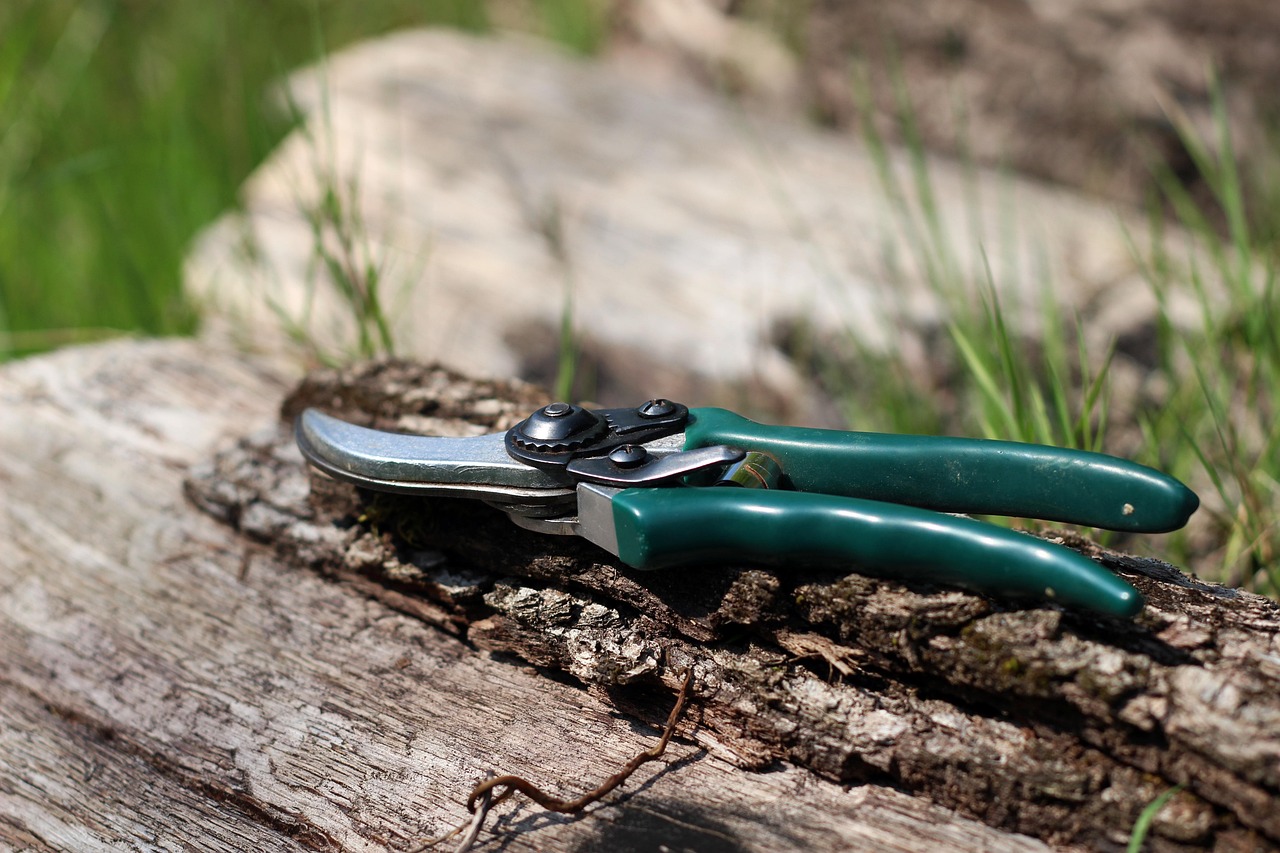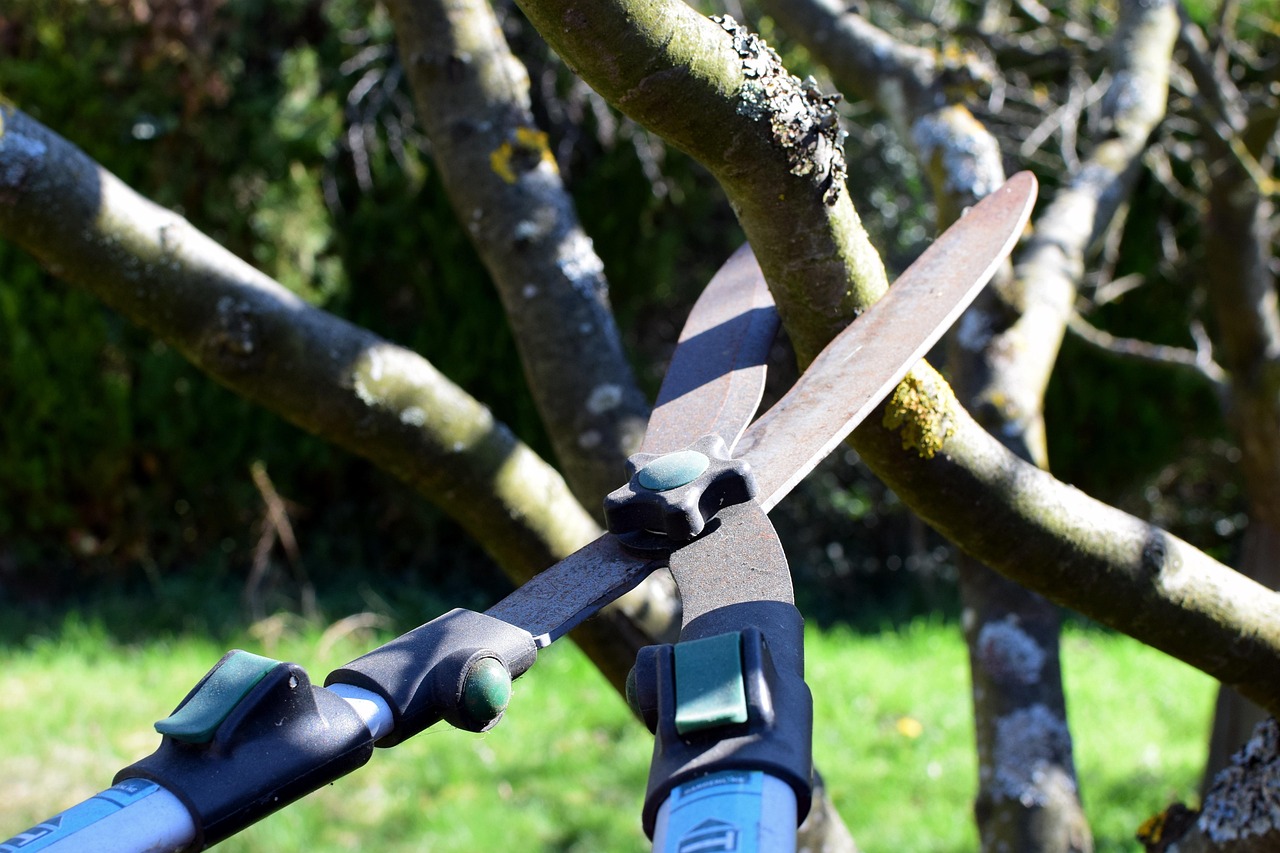Specialized pruning techniques for orchards involve methods tailored to enhance fruit production, improve tree health, and manage tree shape. These techniques vary by species and can significantly impact yield and tree longevity.
Pruning is an essential practice in orchard management. It involves the selective removal of certain parts of a plant, such as branches, buds, or roots. The main goal of pruning is to promote healthy growth and maximize fruit production. Different types of trees require specific pruning methods to ensure they thrive in their environment.

The timing and technique of pruning can influence the overall health of the orchard. Proper pruning allows sunlight to penetrate the canopy, which helps fruit develop evenly. Additionally, good pruning practices can prevent disease by improving air circulation within the tree. Understanding the unique needs of each type of tree is crucial for successful orchard management.
Types of Pruning Techniques
Several specialized pruning techniques are commonly used in orchards. Each technique serves a different purpose and is suited to particular species of fruit trees. Below are some key pruning techniques:
- Thinning: This technique involves removing entire branches or shoots to reduce the density of the canopy. Thinning improves light penetration and air circulation, which enhances fruit quality.
- Heading: In heading, the tips of branches are cut back to promote bushier growth. This technique encourages lateral branching and can be beneficial for certain fruit trees.
- Renewal Pruning: This method involves removing older branches to encourage new growth. It is commonly used in established orchards to rejuvenate trees.
- Pinching: Pinching is a technique used primarily on young plants. It involves removing the growing tip of a shoot to promote branching and bushiness.
Understanding these techniques is essential for any orchardist aiming to improve their trees’ health and productivity. Each method plays a specific role in shaping the tree and influencing its growth patterns.

Benefits of Specialized Pruning Techniques
The benefits of specialized pruning techniques extend beyond aesthetics. They can have significant implications for fruit yield and tree longevity. Here are some critical advantages:
- Increased Yield: Properly pruned trees often produce more fruit as they can better utilize sunlight and nutrients. This increase in yield can lead to higher profits for orchard owners.
- Improved Fruit Quality: Pruning enhances fruit size and flavor by allowing better exposure to sunlight and air circulation.
- Disease Prevention: By removing overcrowded branches, pruning reduces the risk of fungal diseases and pest infestations.
- Better Tree Shape: Specialized pruning techniques help maintain a desirable shape, making it easier to harvest fruit and manage the orchard.
Timing of Pruning
The timing of pruning is just as important as the technique itself. Different trees have varying optimal times for pruning, often dictated by their growth cycles. Here are some general guidelines:
| Fruit Tree Type | Optimal Pruning Time |
|---|---|
| Apple Trees | Late winter to early spring (before bud break) |
| Pear Trees | Late winter to early spring (before bud break) |
| Citrus Trees | After harvest (late winter) |
| Peach Trees | Late winter (before flowering) |
Following these timing guidelines ensures that trees can heal properly and continue growing vigorously after pruning. Each tree species has specific requirements that should be adhered to for optimal results.

Specialized pruning techniques are vital for maintaining the health and productivity of orchards. By understanding the various methods, their benefits, and the importance of timing, orchardists can ensure their trees flourish for many years to come.
Common Tools for Pruning Orchards
Having the right tools is essential for effective pruning. The tools used can greatly influence the quality of the cuts and, ultimately, the health of the tree. Below is a list of common pruning tools and their uses:
- Hand Pruners: These are ideal for small branches and delicate cuts. They come in various sizes and types, with bypass pruners being preferred for clean cuts.
- Loppers: Loppers are larger than hand pruners and are used for cutting thicker branches. They provide greater leverage and are available in both manual and ratchet styles.
- Pruning Saws: For branches too thick for loppers, a pruning saw is necessary. These saws have specialized teeth designed for cutting green wood.
- Pole Pruners: When high branches need to be trimmed, pole pruners allow access without the need for a ladder. They extend reach and often have a pruning saw or shears attached.
- Hedge Shears: Useful for shaping and trimming hedges or smaller trees, hedge shears help maintain aesthetic appeal in orchards.
Using the right tool for the job not only makes the work easier but also helps to prevent injury to the tree. Proper maintenance of tools, such as regular sharpening and cleaning, is necessary for optimal performance.

Pruning Techniques by Tree Type
Different fruit trees have unique growth habits that require tailored pruning techniques. Understanding these habits is crucial for achieving the best results. Below is a breakdown of pruning techniques specific to various types of fruit trees:
Citrus Trees
Citrus trees have a unique growth pattern that requires specific attention. The primary focus when pruning citrus trees includes:
- Removing Dead or Unhealthy Branches: This improves air circulation and reduces disease risk.
- Shaping the Tree: Maintaining an open center allows sunlight to reach all parts of the tree.
- Thinning: Reducing the number of fruit-bearing branches can enhance fruit quality.
Apple Trees
Apple trees benefit from a systematic approach to pruning to encourage strong growth and fruit production. Key techniques include:
- Central Leader Method: This technique promotes a strong central trunk, allowing for an open canopy.
- Annual Summer Pruning: Light pruning during summer can help manage tree shape without removing too much foliage.
- Winter Pruning: This is crucial for removing older wood and promoting new growth.
Peach Trees
Peach trees require careful pruning to ensure healthy growth and fruiting. Important practices include:
- Open Center Pruning: This method creates a vase-like shape that allows light penetration.
- Cutting Back New Growth: Reducing the length of new shoots encourages fruit production on shorter spurs.
Pest and Disease Management Through Pruning
Proper pruning techniques also play a vital role in managing pests and diseases within orchards. Here are some strategies to consider:
- Regular Inspection: Frequent checks during pruning can help identify early signs of disease or pest infestations.
- Sanitizing Tools: Clean tools between cuts to prevent spreading diseases from one tree to another.
- Removing Infected Wood: Promptly remove any diseased branches to limit the spread within the orchard.
Pest management can be further enhanced by incorporating companion planting strategies. Certain plants deter pests naturally while attracting beneficial insects that promote pollination and overall health.
The Role of Pruning in Sustainability
Sustainable orchard management practices increasingly emphasize the importance of pruning. Here’s how pruning contributes to sustainability:
- Resource Efficiency: By optimizing tree structure, pruning enhances resource use such as water, nutrients, and sunlight.
- Biodiversity Support: Sustainable pruning practices maintain diverse ecosystems within orchards, supporting various beneficial species.
- Soil Health Improvement: Properly pruned trees contribute to healthier soil through improved leaf litter and organic matter.
Sustainable practices not only improve yields but also enhance ecosystem health. As awareness grows regarding environmental impact, orchardists are increasingly adopting strategies that promote long-term sustainability.
By mastering specialized pruning techniques tailored to specific tree types, employing effective tools, managing pests and diseases, and embracing sustainable practices, orchardists can significantly enhance the health and productivity of their orchards over time.
Advanced Pruning Techniques for Specialized Orchards
As orchardists become more skilled in standard pruning practices, they may explore advanced techniques to enhance tree health and fruit production further. These methods require a deeper understanding of tree biology and growth patterns.
Espalier Pruning
Espalier is a technique that involves training trees to grow flat against a structure or wall. This method is often used in small spaces or urban environments. Key benefits of espalier pruning include:
- Space Efficiency: Espaliered trees take up less space, making them ideal for limited areas.
- Improved Sunlight Exposure: The flat growth allows for better light penetration, enhancing fruit quality.
- Aesthetic Appeal: Espaliered trees can serve as beautiful living fences or decorative elements in a landscape.
To create an espaliered tree, start by selecting a young tree. Use wires or trellises to guide the branches into a flat formation. Regular pruning is essential to maintain the desired shape and encourage new growth along the trellis.
Crown Reduction
Crown reduction is a technique used to lower the height of a tree while maintaining its natural shape. This method is particularly useful for older trees that have outgrown their space. Important aspects of crown reduction include:
- Selective Cutting: Focus on removing the upper branches while preserving the tree’s overall structure.
- Maintenance of Health: Ensure that enough foliage remains for photosynthesis and tree vitality.
Crown reduction should be performed during the dormant season to minimize stress on the tree. This technique allows trees to remain productive while adapting to changing space requirements.
Pruning for Specific Fruit Types
Berry Bushes
Berry bushes, such as blueberries and raspberries, require unique pruning methods to promote robust growth and fruit production. Here are some key techniques:
- Blueberries: Prune in early spring by removing weak or dead branches. Focus on maintaining an open center to allow sunlight and airflow.
- Raspberries: Remove canes that have produced fruit after harvest. Thin out crowded canes to promote better fruiting in the next season.
Regular pruning of berry bushes can lead to increased yields and healthier plants over time.
Grapevines
Grapevines require meticulous pruning to ensure high-quality fruit production. The primary goal is to manage vine structure and encourage healthy growth. Important practices include:
- Cane Pruning: Select one or two strong canes from the previous year’s growth to train for this year’s production. Remove any unproductive wood.
- Sucker Removal: Regularly remove suckers that grow from the base of the vine to improve airflow and direct energy toward fruit production.
The timing of grapevine pruning is also crucial, typically occurring in late winter or early spring before bud break.
The Importance of Training Trees
In addition to pruning, training trees throughout their growth cycle can significantly impact their health and productivity. Proper training techniques help develop a strong structure and promote optimal growth patterns.
Tree Training Techniques
Some common training techniques include:
- Staking: Young trees may benefit from staking to provide support as they develop strong trunks.
- Tree Tying: Use soft ties to secure branches in desired positions without damaging the bark. This method encourages branches to grow at specific angles for better light exposure.
- Branch Spreading: Gently spread branches using weights or props to encourage wider angles, which can improve fruit production.
Training should begin when trees are young and continue as they grow. Regular monitoring and adjustments will ensure the desired shape and structure are maintained.
Seasonal Considerations in Pruning
The seasons play an essential role in determining when and how to prune. Understanding seasonal impacts can enhance pruning effectiveness.
Spring Pruning
Spring is an active growing season, making it ideal for certain types of pruning. Key considerations include:
- Pruning After Bloom: For some trees, pruning after flowering encourages better fruit set for the following year.
- Removing Dead Wood: Spring is an excellent time to remove any dead or damaged branches that may have gone unnoticed during winter.
Fall Pruning
Fall can also be beneficial for specific pruning tasks, particularly for certain species that thrive with fall maintenance. Important tasks include:
- Light Thinning: Thinning can be performed in the fall to reduce overcrowding and promote air circulation before winter dormancy.
- Preparing for Winter: Pruning in fall helps prepare trees for winter by removing weak or damaged wood that may break under snow or ice.
Caring for trees throughout the seasons ensures they remain healthy and productive year after year.
Integrating Technology in Orchard Pruning
As technology continues to advance, orchardists are increasingly leveraging tools and software to enhance their pruning practices. The integration of technology can provide valuable insights and improve the efficiency of orchard management.
Pruning Software and Apps
Various software applications and mobile apps are designed to help orchardists plan and execute their pruning strategies effectively. These tools can assist in tracking tree growth, analyzing pruning patterns, and scheduling maintenance tasks. Key benefits include:
- Data Tracking: Users can log pruning activities, monitor tree health, and track production yields over time.
- Growth Analysis: Some apps use growth models to simulate how different pruning techniques may affect future yields.
- Task Scheduling: Many applications allow users to set reminders for seasonal pruning tasks, ensuring that nothing is overlooked.
By utilizing technology, orchardists can make informed decisions based on data rather than relying solely on traditional methods.
Drones and Aerial Imaging
Drones equipped with cameras and sensors are becoming popular in modern orchard management. They can provide aerial imagery that helps in assessing tree health and identifying areas that require attention. Benefits of drone technology in orchards include:
- Visual Inspection: Drones can quickly cover large areas, allowing for a comprehensive view of the orchard and identifying problem areas.
- Health Monitoring: Specialized sensors can detect issues such as water stress or disease before they become visible to the naked eye.
- Precision Pruning: Aerial imaging can help determine which trees need pruning and what specific interventions may be necessary.
The use of drones represents a significant advancement in orchard management, offering new opportunities for efficiency and effectiveness in pruning practices.
Training and Education for Orchardists
Continuous education and training are crucial for orchardists looking to improve their pruning techniques. Workshops, online courses, and field demonstrations are all valuable resources that provide practical knowledge. Key areas of focus in training include:
- Understanding Tree Physiology: Learning about how trees respond to pruning helps orchardists make better decisions.
- Hands-On Practice: Practical demonstrations allow participants to apply what they learn in real-world situations.
- Networking Opportunities: Engaging with other professionals in the industry fosters knowledge sharing and collaboration.
Investing in education can lead to improved techniques, resulting in healthier trees and higher yields.
The Future of Pruning Techniques
The future of specialized pruning techniques lies in a combination of traditional knowledge and modern technology. As research continues to evolve, new methodologies will emerge that prioritize sustainability and efficiency. Key trends to watch include:
- Genetic Research: Advancements in genetic research may lead to the development of tree varieties that require less maintenance and are more resilient to disease.
- Automated Pruning Systems: Robotic systems designed for pruning may become more common, allowing for precision cuts while reducing labor costs.
- Sustainable Practices: Continued emphasis on eco-friendly practices will drive innovation in pruning techniques that benefit both trees and the environment.
The integration of these trends will likely redefine how orchards are managed in the coming years, ultimately enhancing productivity while promoting environmental stewardship.
Conclusion
Specialized pruning techniques play a vital role in the success of orchards. From understanding the unique needs of different tree species to employing advanced methods such as espalier and crown reduction, effective pruning can greatly enhance fruit quality and yield. The importance of seasonal timing cannot be overlooked, as it influences the health and productivity of trees throughout their lifecycle.
The integration of technology, including software applications and drones, offers valuable tools for modern orchard management. These advancements enable orchardists to make data-driven decisions that enhance efficiency and effectiveness. Continuous education remains essential for developing practical skills and staying informed about emerging trends and practices.
Ultimately, a commitment to sustainable practices combined with innovative techniques will ensure that orchards thrive for generations to come. By embracing both tradition and technology, orchardists can optimize their pruning strategies and contribute to a more productive and sustainable agricultural future.
